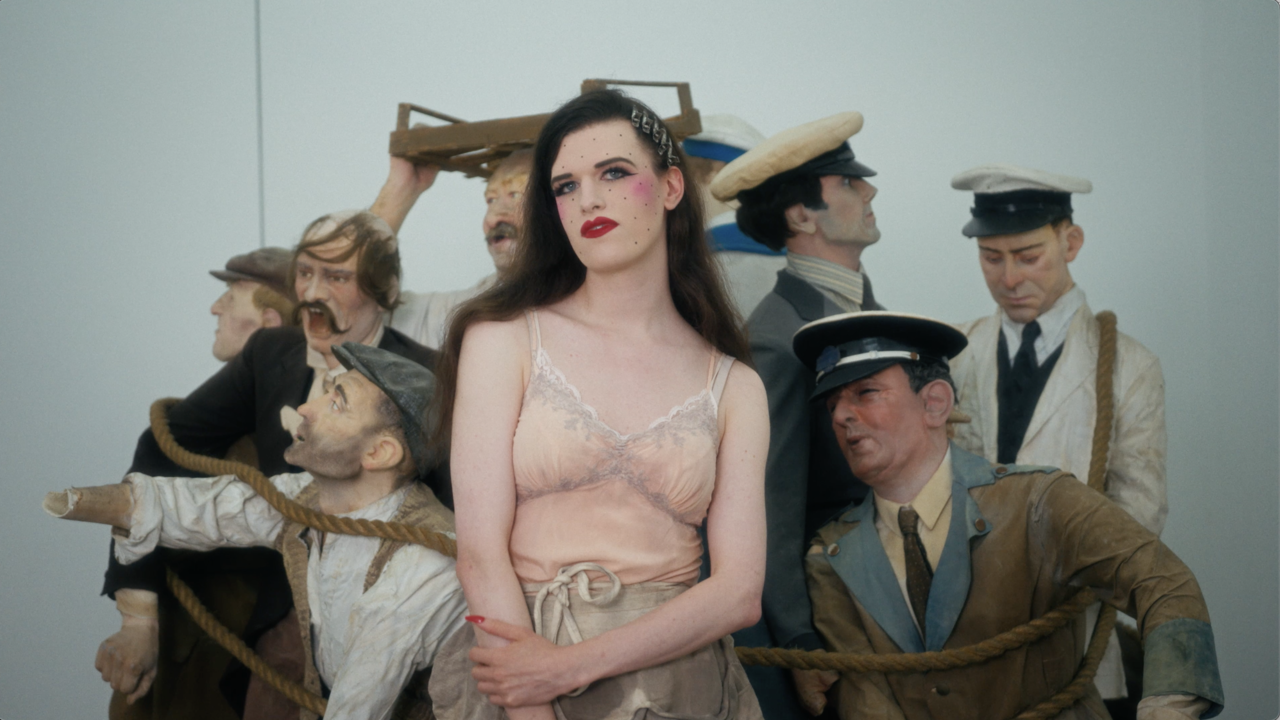Focus Studio Visit: Ann Cathrin November Høibo
Tactile textiles
Tactile textiles

The loom took centre stage. About two metres high and equally wide, its sturdy frame dark with the patina of age, it sat in the middle of the gallery at the Kunsthall in Kristiansand, the hometown of Ann Cathrin November Høibo. When I first met the artist there, the loom had been in place for several weeks whilst she produced work in situ for her solo show which was set to open in September. All of the strands of November Høibo’s work seem to lead, Ariadne-like, back there, to the raw fronds of the warp yarn ballasted by leaden weights. These anchor her, too, in a venerable (female) lineage of Norwegian textile art that stretches back through her own mentor, Else Marie Jakobsen, in turn a pupil of Hannah Ryggen, to Frida Hansen, who established the Workshop for National Tapestry Weaving in 1892, weaving folk motifs of Nordic identity as the 19th century turned into the 20th and the country struggled for independence from Sweden. All three were radical in their way, claiming a place for textiles as a legitimate artistic media to express social, political and personal concerns.
This particular loom dates from Hansen’s time. You could imagine it buttressed against the low beams of some dim-lit worker’s cottage of yore but it was at ease in the bright, spacious gallery, draped casually with the artist’s baseball cap and bum bag, just part of the furniture. These are not the only items from November Høibo’s wardrobe to have made their way into her exhibitions. The first time we meet, she is wearing a bomber jacket that I was sure I had once seen hanging from a picture hook next to a dishevelled tapestry in Untitled (Alpelue #4) (2012), as part of her solo show, ‘Alpelue’, at Henie Onstad Kunstsenter, just outside of Olso. Alpelue is Norwegian for beret, the headgear of choice for both military personnel and artistes. November Høibo knows how to play up to the associations of garments, or to shrug them off, to see them for the threads they are and the shapes they can take. At Kristiansand Kunsthall, she had mounted rows of coat hooks on two of the walls (both Untitled, 2013). As standard plastic ikea storage solutions for the studio, these pegs (the same ones she uses at home) are functional objects. The items arranged casually over them – the Hawaiian shirt, the laundry bags, the Adidas running shorts – might have been destined for the final show or, equally, to be taken home, perhaps in one of the laundry bags hung nearby.

I like their just-taken-off-ness, their ambiguous status between lived-in things and anonymous, sculptural objects. They retain some of the impression of the body, yet they seem to have been chosen because of their generic qualities. These are the most impersonal of personal items.
At one point in our conversation, November Høibo mentions Tracey Emin, with whose work these pieces share a certain sensibility. Her work is personal and sexually charged, but in an offhand way. Against one wall, a mattress stripped back to its wire springs, warped by the cumulative weight of bodies, hangs near a row of coat hooks that hold clothes and strips of pale, fleshy pink pig leather, tied together with the velvet threads woven through them. Separating the two pieces is a flash of neon yellow that peeks from between two boards covered in fabric, one of which leans against the wall and the other on the floor: a party dress, fallen down the back of an Ikea sofa bed, a slipped-off trace of the night before (all works Untitled, 2013). The whole tableau is eyebrow-raisingly suggestive. If Emin’s pathos-laden work wants to be loved, November Høibo’s has all the casual intimacy of a one-night stand. Like the garments they contain, pieces such as these reveal and conceal in equal measure. With their easy domesticity, they flirt with personal revelation, but their off-the-shelf quality keeps them somehow aloof.

Fabrics are fetish items par excellence, concealing and revealing our bodies beneath. Like a fleamarket furrier, November Høibo trades in skins, second skins, synthetic skins – the shiniest, sweatiest and most suffocating of fabrics. Her work shares a greediness with Emin’s; but it is a material, rather than emotional, greediness that comes from a sensuous, embodied desire. From the creamy cowhide fattiness of white leatherette, stretched across frames like blank canvases, to the cheap polyester of the Chinatown-bought laundry bags and an unexpected collection of beach-combed shelves tucked away behind a column, the work is hungrily tactile.
Weaving is all about touching, interlacing threads with dancing fingers. Of her own loom, Ryggen said, ‘I always called it my harp, which I played.’ To make her patchwork tapestries, November Høibo weaves through a clump of thread, pushing it down with the prongs of a fork, as Jakobsen taught her, like a glutinous, noodley slurp. I think of Eva Hesse – particularly her latex pieces – and the way things are left hanging, to capture the visceral sensuality of the coldly industrial. Though November Høibo clearly savours craft and technique, she rejects a homespun aesthetic. There is no equivalent here of Emin’s embroidered quilts. Her works are not loud or dramatic, but they are confident in their own domesticity. As the empty clothes hooks and unfilled ikea shelves remind us: we lust after and consume; we make and manufacture; we produce excess, produce imitations; we want, and want more.
Ann Cathrin November Høibo lives and works in Oslo, Norway. This year she has had solo exhibitions at Kristiansand Kunsthall, Norway, and Drei Gallery, Cologne, Germany. Her work has also been included in recent group shows at Lulu, Mexico City; White Columns, New York, USA; Nomas Foundation, Rome, Italy; and Wentrup Gallery, Berlin, Germany (all 2013). In 2014, she will have a solo exhibition at STANDARD (OSLO).






















